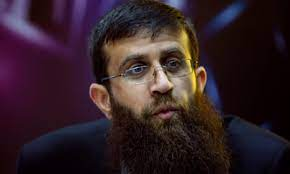Jack Cade’s Rebellion began on this day 1450 when Kentishmen, led by Jack Cade, marched to London to protest against laws introduced by King Henry VI. It was one of the most important popular uprisings to take place in England since the Peasant's Revolt of 1381https://teifidancer-teifidancer.blogspot.com/2016/06/wat-tyler-and-peasants-revolt-of-1381.html It began as an orchestrated demonstration of political protest by the inhabitants of south-eastern England against the corruption, mismanagement, and oppression of Henry VI's government. especially with high taxes, the incompetence of Henry VI's advisers and especially the war with France that had lately seen the loss of Normandy at the end of 1449. .
Cade’s method of tackling this, was to draft and distribute a manifesto entitled The Complaint of the Poor Commons of Kent which was issued in spring 1650..This document set out the grievances of the people he was representing, and listed fifteen complaints and five demands that he wished the king to tackle.
The rising, the most extensive popular movement between 1381 and the sixteenth century, was relatively limited in its aims and was certainly not directed at the overthrow of the social order.although they did call for some social change, notably to the Statute of Labourers, which made peasants subject to compulsory labour, social change was not the rebel's root concern.
Instead, most of these minor gentry wanted an end to poor government. They did not call for sweeping social change, but for the removal of certain councillors, the return of royal estates that had been granted out, and improved methods of taxation.
And although Cade's Rebellion has sometimes been characterised as a peasant uprising. similar to the Peasant's Revolt. such is not really the case. Cade's Rebellion certainly attracted numbers of peasants, but the evidence suggests that Cade's support was fairly widely based, and that the strength of his leadership lay in his ability to act as a spokesmen for all the social groups that supported him and who objected to the political climate of the times. Even churchmen joined the rebels, including the rector of Mayfield and the Prior of St Pancras in Lewes.With the nobles of England glowering threateningly at each other, and the government, bankrupted by the years of war in France, beginning to collapse, England in the middle of the 15th century was desperately in need of a strong leader.
The man who came forward as claimant for this position Jack Cade self-proclaimed "Captain of Kent." is something of a mystery man; even his name is uncertain. Some of his followers called him John Mortimer, and claimed that he was related to Richard, Duke of York, and also that he had fought for France against England in the Hundred Years War. He appeared to history out of nowhere in the spring of 1450, and by sheer dint of personality became the recognized leader of the Kentish protests. Cade became a hero to the ordinary small landowners of Sussex and Kent, who called him ‘John Mend-All’ for restoring order and justice
Cade gathered about 5,000 supporters from the south east of England and met the King at Blackheath in early June 1450. Cade refused to back down forcing the King to flee. Later that month Cade's army defeated a section of Henry's army at Sevenoaks and the rebels marched on London.
At first they were welcomed by the Londoners, who were in sympathy with many of Cade's aims. The rebels stormed the Tower of London but just failed to take the fortress. They killed the Archbishop of Canterbury and Henry's treasurer, Sir James Fiennes, as well as the Sheriff of Kent, who had their heads cut off and placed on poles kissing each other.
As fear spread through the ruling class the king, in an attempt to appease the rebels and quieten the unrest in his own camp, sent two high profile names on Cades hit list to the Tower. However, Lord Saye, the former treasurer, and the equally unpopular William of Crowner, the Under-Sheriff of Kent were not sufficient scapegoats. Cades army was advancing, and many royal soldiers were wavering in their loyalty, so much so that they were disbanded by their demoralised commanders. Henry VI left London, seeking refuge at Kenilworth Castle in Warwickshire.
Moving forward from Southwark on 3rd July, Cade crossed London Bridge, struck his sword on the London Stone, and proclaimed himself Lord Mayor. The rebels were buoyed with success and confidence as they were joined by many from the City.
The idea of the Tower being attacked forced Lord Scales and the Aldermen to hand over Lord Saye and William Crowmer to the rebels. The pair were taken to the Guildhall and quickly given token trials, which ended in their execution, and their heads stuck on high poles and carried triumphantly through the streets by the exultant mob.
At first Cade was able to maintain a level of discipline among his men, although, it was perhaps inevitable that order would give way to chaos. Looting and brawling soon heightened the tension; goodwill from many Londoners began to turn into resentment. Cade had done his best to stop the killing, raping and looting, but without success. This turned the Londoners decisively against him and may have alienated his own respectable followers as well.
Within days, the insurgents had outstayed their welcome. Lord Scales, making what, to him, must have felt like a one-man stand, managed to instil some resolve into the Tower garrison, while the people of the city were rallied to fall into line by their own councillors. In the dead of a July night, a mix of soldiers and citizens cleared the streets and forced Cade’s men back onto London Bridge for a ferocious showdown. Fighting raged all night. When dawn broke, the northern half of the bridge was back in royal hands. While, the rebels huddled together at the southern end. However, before Scales could mount a further assault to regain the rest of the bridge, Archbishop John Kemp, Lord Chancellor, intervened. It was time for political negotiation.
The Lord Chancellor sent William Waynflete, Bishop of Winchester, to talk to the rebels.Probably sensing that his followers were ready to drop Cade presented his set of demands to the Bishop and obtained a promise that they would be met in full The Bishop produced official pardons, ready to be offered to anyone willing to lay down their arms and give up the rebel cause.
The general pardon of the king was gladly accepted by most of the rebels and citizens, but many were hanged as traitors and to frighten off others.And neither the king nor Parliament had agreed to any of the rebel's demands, and neither seemed prepared to do so anytime soon,
The rebels quickly dispersed. Cade himself was at Dartford on the 8th and Rochester on the 9th, where he discovered that the government was offering a thousand marks for him alive or dead. He left two days later in disguise.The new Sheriff of Kent, Alexander Iden, pursued Cade and caught him on July 12, 1450, at a little hamlet near Heathfield in Sussex. The hamlet is now known as Cade Street. There Cade was mortally injured, and he died on his way back to London
Unsurprisingly, Henry took the opportunity to make an example of him and he had a mock trial enacted out with Cade then being posthumously hung, drawn, and quartered. His limbs were sent back to various parts of Kent, and his head was displayed on a pole on London Bridge. Cade’s Articles of Complaint went the way as his body. and the heads of other leaders of his cause were put alongside to keep him company. The wheel had come full circle, but its barbed axle had gored into a weak and unstable government and tore open a wound that would never heal. The rebellion had exposed the king as weak and vulnerable
And although The Jack Cade Rebellion had been unsuccessfuL and quieted and dismissed shortly after Cade's death, the feeling of rebellion in England did not die down so easily. For example, it inspired ideas of revolt in many other counties in England besides Kent. Many of Cade;s followers from the county of Sussex, such as the yeomen brothers John and William Merfold, organized their own rebellion against King Henry VI. Unlike Jack Cade's revolt, however, the men in Sussex took Cade's ideas a step further in that they made declarations to reform that were much more radical and aggressive This animosity could have been due to the fact that the King had gone back on his proclamation of pardon for Jack Cade, which made many of the rebels distrust the King's government.
The suspicion that the King wanted all followers of Cade dead inspired the rebels to take a more drastic view of the reformation of English rule. They stated that the men of Sussex planned on killing the King and all his Lords, replacing them with twelve of the rioters own men. These revolts organized by the young Sussex men rallied smaller numbers of followers than that of the Cade rebellion, but still had an effect on the societies in England. For example, all the riots and looting taking place in English counties gave people an excuse to go on rampages of destruction for their own personal gain while being absolved of blame by claiming that their behavior was a rebellion against the King.and all theses centuries later we're still working the kind of change that many of Cade's supporters dreamed off.
The behavior of these later rebels can be seen as having been directly inspired by Jack Cade.Also, the larger battles over the crown of England, known as the Wars of the Roses, were clearly inspired by views of Cade's rebels.
The story of Jack Cade’s Rebellion was later dramatized by Shakespeare in his play, Henry VI and in other tales he can be see portrayed as a Robin Hood character, .









.jpg)
